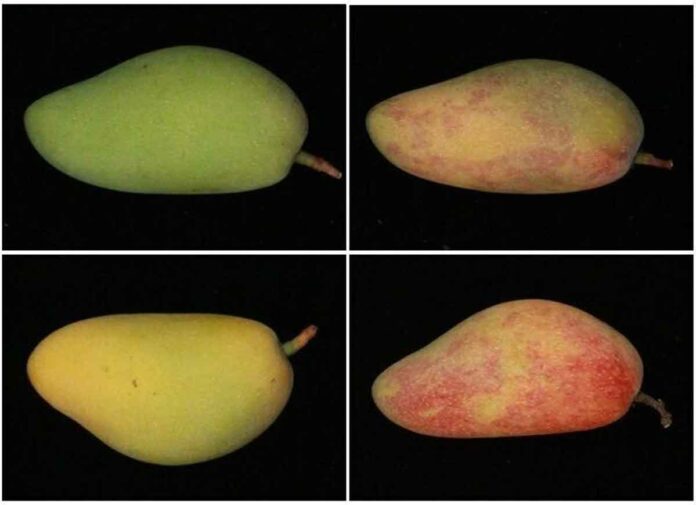We are frequently advised to limit our “screen time.” Because the harsh blue light of the screens emit. Plants can detect blue light as well. But here blue light may help in making their fruits taste better. Mangoes can become redder, sweeter and riper when exposed to blue light for several days. This is according to new research published in the Journal of Agricultural and Food Chemistry.
Plants rely on sunlight for photosynthesis and fruit ripening. Light exposure has been shown in studies to affect the appearance of some fruits’ peels as well as the amount of sugar and pigments in fruits such as tomatoes. Tomatoes contain chlorophyll throughout their flesh. Mangoes also contain this pigment in their thick peels and it may alter how blue light affects the flesh.
As sunlight contains many colours, different wavelengths may have different effects on the peels. So, Yuanwen Teng and colleagues wanted to investigate how blue light affects mango quality and ripeness.
To better understand this phenomenon, the researchers exposed a group of mangoes to blue light for nine days and another group to darkness. Mangoes grown in blue light had far more anthocyanins in their peels. It made them redder than those grown in the dark. These mangoes had softer, sweeter and have more sucrose and carotenoids than the other group.
Under blue light, the team discovered that light-responsive genes involved in the photosynthesis pathway. Key genes also involved in the production of sucrose, anthocyanin and carotenoids. According to the researchers, this meant that the mangoes could directly perceive the light and activate an internal genetic signalling pathway.
The effect was stronger in the peel than in the flesh. It indicates that the blue light did not penetrate very far beyond the skin. According to the researchers, this work could help shed light on the complex relationship between coloured light and fruit internal quality.
More information: Junbei Ni et al, Blue Light Simultaneously Induces Peel Anthocyanin Biosynthesis and Flesh Carotenoid/Sucrose Biosynthesis in Mango Fruit, Journal of Agricultural and Food Chemistry (2022). DOI: 10.1021/acs.jafc.2c07137

